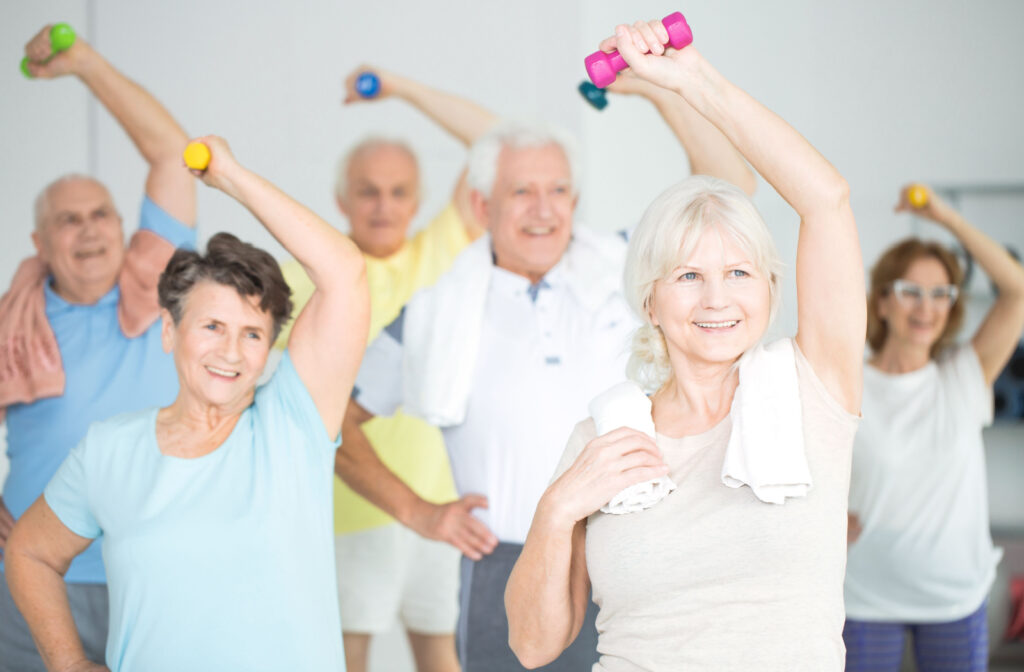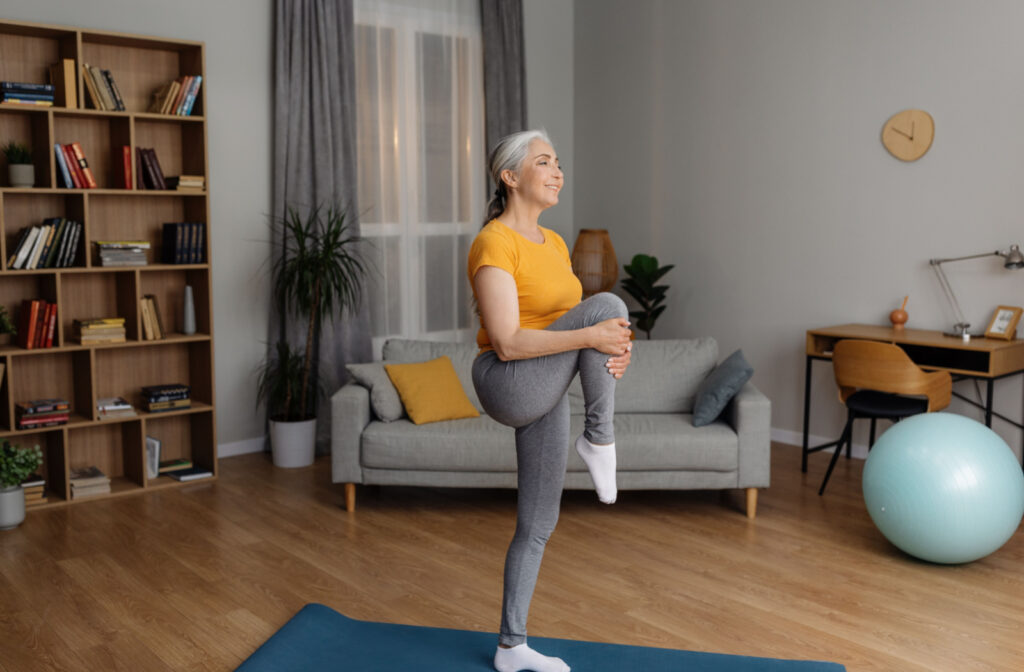Many of us take our balance for granted. But as we get older, it becomes much more likely to start experiencing falls—and these can have serious long-term consequences. Seniors need a certain level of physical exercise every week to remain healthy, and balance exercises should be included—otherwise, falling or stumbling becomes a risk. Fortunately, this risk can be significantly reduced by performing balance exercises!
Balance exercises—like heel-toe walking or leg lifts—can be a simple addition to a senior’s day. These can strengthen the muscles needed to safely go about your day, keep the joints healthy, reduce the risk of falling, and can be done almost anywhere!
Why Is Balance Important for Seniors?
As we age, our balance becomes a crucial part of our daily adventures. It’s the difference between confidently exploring the world or hesitating at every step. A decline in balance isn’t just a physical setback—it can actually compromise our security.
Imagine you’re out for a leisurely stroll, feeling the warmth of the sun on your face, and suddenly, a stumble leads to a fall. It’s not just a physical jolt; it can shake your trust in your own body, make you wary of each step, and add risk to things you once enjoyed.
While losing your balance may seem like a simple thing, it can have long-term consequences on your physical and mental health. This makes it essential to regularly perform balance exercises.
The Importance of Physical Health
Physical health isn’t just about steering clear of illness and disease. It covers many parts of a senior’s life, like:
- Strength
- Flexibility
- Endurance
- Balance
These are important aspects of a senior’s overall well-being, and they can have a noticeable impact on their quality of life. Maintaining your physical health is like you’re actively investing in your future by giving yourself the tools needed to remain upright and strong.
Strength helps seniors perform daily activities with ease, from carrying groceries to getting out of a chair. Flexibility keeps joints much more mobile, reducing the risk of painful stiffness. And endurance allows a person to stay active and independent, enjoying life to the fullest.
Balance is much more subtle but is just as important as these other traits. It isn’t just about staying upright; it’s a key player in preventing falls, which is a leading cause of injury among seniors. Balance exercises help sharpen reflexes and stability, reducing the chances of stumbling and taking a tumble.
So when seniors maintain good physical health—including their balance—they’re more likely to participate in social activities since they’re much less at risk of harming themselves. This means dancing at gatherings, taking leisurely strolls with friends, or even something like joining a tai chi class!
How Often Should Seniors Do Balance Exercises?
It’s generally recommended by the American Heart Association that seniors perform balance exercises at least two to three times per week. However, it doesn’t hurt to do these exercises a little more often—as long as you aren’t putting yourself at risk.
The good news is that these exercises can be performed almost anywhere at any time. While strength or endurance training often needs some form of equipment, balance exercises focus primarily on using your own body and training your muscles to support yourself.
This means that the exercises are lower-impact, easier to perform, and don’t require any additional equipment (other than the occasional chair or wall.)
Easy Balance Exercises for Seniors
When starting to work on your balance, there are a few exercises to try, like:
- The heel-to-toe walk. This involves walking in a straight line, placing the heel of one foot directly in front of the other foot’s toes.
- Leg lifts. While holding onto a chair for support, lift one leg off the ground and hold for 10 seconds before switching legs.
- Weight shifting. Stand with your feet about hip-width apart and shift your weight from side to side, but keep your feet flat on the floor for support.
- Back leg raises. Holding onto a chair for support, slowly lift one leg straight back without bending the knee. Make sure not to stretch too far! If you feel too much resistance, stiffness, or pain, slow down or stop.
- Wall pushups. Stand an arm’s length away from a wall and lean forward to do pushups against it.
By doing exercises like these, seniors can begin to reduce the risk of falling. Over time, seniors can grow and strengthen these muscles to improve quality of life and take the risk of falling out of their favorite activities!

Living a Healthy Life as a Senior
Maintaining good physical health, including balance, isn’t just about safety— it’s about improving your overall quality of life. By reducing the risk of falls, seniors can confidently continue going about their favorite activities.
For seniors interested in healthy living and a supportive community, senior living communities like ours at Cedar Creek Senior Living can be an ideal solution. Our community offers access to fitness programs, social activities, and the chance to be surrounded by like-minded people. Schedule a tour with us today!



